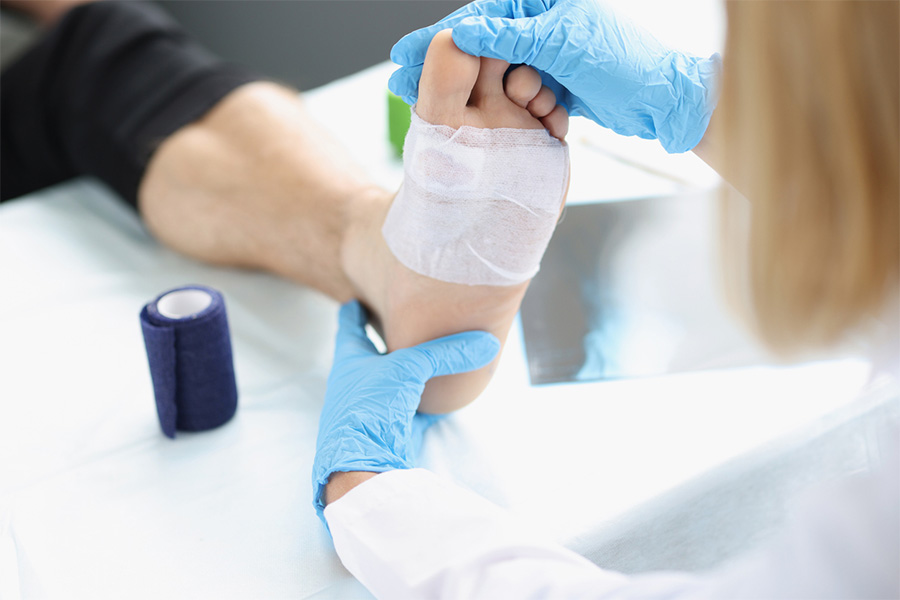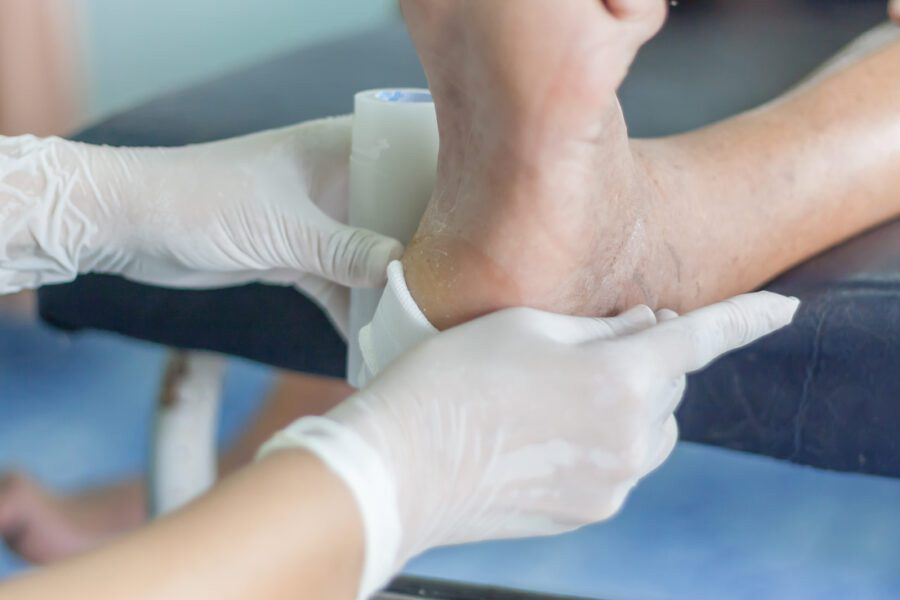Diabetes is a serious and often debilitating condition that affects millions worldwide. Unfortunately, complications from diabetes can be severe. They range from vision problems and nerve damage to kidney disease and foot ulcers. With proper care, these wounds can be successfully managed and healed.
This comprehensive guide will tell you everything to know about diabetic wound care.
1. Clean the Wound Carefully
Cleaning diabetic wounds is essential for promoting proper healing. Clean the wound gently and remove any debris or dirt.Use mild soap and lukewarm water to clean the wound, then dry it with a soft towel. Be careful not to rub too hard or use any products that may irritate the skin.
2. Treat Infections Promptly
Contact your podiatrist right away if your foot ulcer becomes infected. Infections can be dangerous and even life-threatening if left untreated.If the wound looks infected, your doctor may prescribe antibiotics or other treatments to clear up the infection.They may also recommend a debridement procedure to remove any dead or damaged tissue.
3. Apply New Dressings Regularly
Dressings can help the wound stay clean and promote proper healing. Your doctor may recommend different types of dressings depending on the size and location of the wound.It is important to follow the instructions for changing dressings carefully to promote healing and prevent worsening of the infection.
4. Monitor Blood Sugar Levels
Maintaining proper blood sugar levels is an important part of caring for diabetic wounds. High blood sugar can prevent wounds from healing and increase the risk of infection.Monitor your blood sugar levels regularly and talk to your doctor if they seem too high or too low.
5. Use Pressure Relief
Pressure on the wound can prevent proper healing and increase the risk of infection.Your doctor may recommend using padding or special shoes to reduce the amount of pressure on the wound.
6. Monitor the Wound Closely
It is important to monitor the wound regularly for signs of worsening infection or further damage. Check the wound every day and look for the following:
- Increased redness, swelling, or pain
- Pus or foul-smelling drainage
- Changes in the size or shape of the wound
If you notice any of these signs, contact your doctor immediately.
7. Maintain a Healthy Lifestyle
It is vital to maintain a healthy lifestyle to promote wound healing. To start, aim to:
- Eat a healthy, balanced diet
- Exercise regularly
- Avoid smoking or other unhealthy habits
By taking these steps, you can help ensure that your wounds heal properly and quickly.
8. Seek Medical Attention
Does your wound not seem to be healing? Do you observe signs of a worsening infection? If so, call your podiatrist right away and get medical treatment.
Your doctor can provide treatment to help the wound heal and reduce the risk of complications. These treatments include the following:
- Medications such as antibiotics or pain medications
- Surgery to remove dead tissue
- Dressings to keep the wound clean and dry
- Debridement to remove dead or infected tissue
- Hyperbaric oxygen therapy (HBOT) to promote wound healing
They can also provide advice on how to care for the wound at home.
9. Learn How to Prevent Wounds
The best way to manage diabetic wounds is to prevent them in the first place.You can start by maintaining good blood sugar control. This will help reduce the risk of ulcers, sores, and other wounds.
You can also use extra padding or wear special shoes to prevent pressure on the feet. Avoid going barefoot, especially outdoors. You can wear socks and shoes that fit properly to reduce the risk of blisters or sores. In addition, be careful when trimming your toenails, as improper techniques can cause wounds. Cut them straight across to reduce the risk.
Finally, check your feet for any signs of damage or infection every day.
Diabetic Wound Care in Cincinnati, OH
Diabetes can lead to wounds that don’t heal properly. It is important to follow your doctor’s advice and take steps to prevent wounds in the first place. If you do sustain foot ulcers, follow a comprehensive wound care plan to promote healing and reduce the risk of complications. Clean the wound regularly, dress it properly, and monitor your blood sugar levels to prevent complications. You should visit your podiatrist for thorough treatment if a wound is not healing properly.
Looking for comprehensive and personalized diabetic wound care in Cincinnati? Cincinnati Foot & Ankle Care has 17 convenient locations across Southwest Ohio to cater to your diabetic wound needs. Our expert podiatrists have extensive experience and training in caring for foot ulcers. Call the office closest to you, so we can assist you best. You can also submit a secure online appointment request form to book a visit with the best podiatrist in Cincinnati.
Share

People with diabetes often experience difficulty healing wounds.




